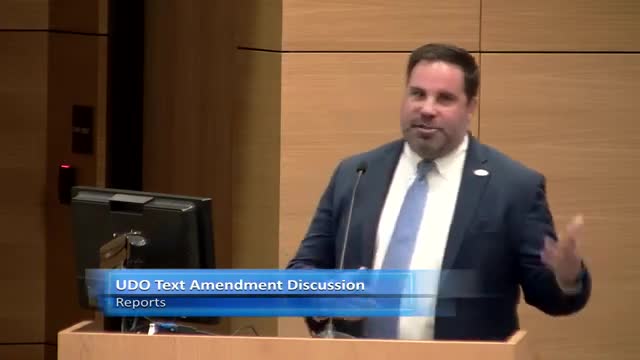Wake County seeks new sites amid booming economic growth
July 31, 2024 | Garner, Wake County, North Carolina

This article was created by AI summarizing key points discussed. AI makes mistakes, so for full details and context, please refer to the video of the full meeting. Please report any errors so we can fix them. Report an error »

During a recent government meeting, officials discussed the current state and future prospects of commercial and industrial development in the Garner area, emphasizing the interconnectedness of zoning amendments and economic growth.
Nate, a key speaker, provided an overview of the commercial and industrial landscape, highlighting the significant progress made over the past four years. He noted that the Beacon Commerce Park, which spans 600,000 square feet, has only 27,000 square feet available, indicating a strong demand for space. However, he expressed concern that the lack of available larger facilities could hinder future opportunities, as many requests for information (RFIs) from Wake County require spaces exceeding 100,000 square feet.
The discussion also touched on the local market's strengths, including North Carolina's population growth and robust commercial real estate market. However, challenges remain, particularly the need for larger facilities and the limited availability of land with necessary infrastructure. The officials acknowledged that while the demand for commercial space is high, the supply is dwindling, with many existing buildings fully leased.
Michael Haley, Executive Director of Wake County Economic Development, followed up by discussing the competitiveness of the Raleigh metro area, which includes Garner. He reported that the region has consistently ranked among the top in economic competitiveness, recently placing second in a national study. This competitiveness is attributed to a diverse economy, a strong higher education ecosystem, and a high quality of life.
Haley also highlighted ongoing efforts to identify new sites for development, noting that 8,000 acres have been earmarked for potential industrial and commercial use. He emphasized the importance of having available land and infrastructure to attract new businesses, stating, \"You can't sell from an empty wagon.\"
The meeting concluded with a call for continued collaboration among local municipalities and stakeholders to address the challenges of land availability and to leverage existing investments in infrastructure to enhance the region's economic development prospects.
Nate, a key speaker, provided an overview of the commercial and industrial landscape, highlighting the significant progress made over the past four years. He noted that the Beacon Commerce Park, which spans 600,000 square feet, has only 27,000 square feet available, indicating a strong demand for space. However, he expressed concern that the lack of available larger facilities could hinder future opportunities, as many requests for information (RFIs) from Wake County require spaces exceeding 100,000 square feet.
The discussion also touched on the local market's strengths, including North Carolina's population growth and robust commercial real estate market. However, challenges remain, particularly the need for larger facilities and the limited availability of land with necessary infrastructure. The officials acknowledged that while the demand for commercial space is high, the supply is dwindling, with many existing buildings fully leased.
Michael Haley, Executive Director of Wake County Economic Development, followed up by discussing the competitiveness of the Raleigh metro area, which includes Garner. He reported that the region has consistently ranked among the top in economic competitiveness, recently placing second in a national study. This competitiveness is attributed to a diverse economy, a strong higher education ecosystem, and a high quality of life.
Haley also highlighted ongoing efforts to identify new sites for development, noting that 8,000 acres have been earmarked for potential industrial and commercial use. He emphasized the importance of having available land and infrastructure to attract new businesses, stating, \"You can't sell from an empty wagon.\"
The meeting concluded with a call for continued collaboration among local municipalities and stakeholders to address the challenges of land availability and to leverage existing investments in infrastructure to enhance the region's economic development prospects.
View full meeting
This article is based on a recent meeting—watch the full video and explore the complete transcript for deeper insights into the discussion.
View full meeting
